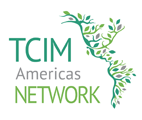Public policies and intercultural adaptations in health services
Since the 1990s, countries in the Americas region have been taking steps to design and implement public health policies with an intercultural approach. Initially, the emphasis was on indigenous peoples, but it was later expanded to include other population groups, such as Afro-descendants and Roma. These policies aim to develop intercultural adaptations in health services in accordance with the specific cultural characteristics and health systems of these populations, thereby eradicating cultural barriers and facilitating their access to national health systems (1).
They have issued regulations recognizing and protecting the existence of traditional medicines and their integration with official national medical systems. They have also developed plans, programs, projects, guidelines, technical guidance, protocols, and regulations to provide socioculturally appropriate health services. These services enable people to access both conventional medicine and traditional medicines. For these systems to be effective, they must be coordinated and develop complementary actions through mutual understanding, appreciation, and respect.
To this end, processes of coordination and participation have been developed with ethnic populations through dialogues of knowledge, considering their respective organizational dynamics. The goal is to ensure the provision of holistic, pertinent, high-quality health services, where health is understood from a broader perspective that encompasses spiritual, physical, and emotional aspects, as well as one’s relationship with nature. This broader perspective also considers the various perceptions and worldviews of health among these populations. Additionally, the approach considers not only the individual but also their family and community, involving various health professionals and institutions. It encompasses health protection, promotion, disease prevention, care, and rehabilitation.
Some countries in the region have also adapted their institutions by opening spaces for interaction between entities and ethnic peoples. These spaces are often referred to as vice-ministries, directorates, offices, or coordination units for traditional medicine, intercultural health, ethnic affairs, or health for indigenous peoples. These spaces facilitate discussions about the relationship and coordination between the different medical systems and the specific allocation of budgets for the care of these populations in their territories or where access is facilitated.
Some countries in the region have implemented intercultural adaptations to provide health services. These adaptations include the use of bilingual personnel as intercultural facilitators or managers, community agents, and health promoters; the presence of traditional midwives and doctors in hospitals; accommodations for companions; the inclusion of traditional foods and herbal medicines; flexible opening hours; signage and educational materials translated into ethnic group languages; and traditional architectural designs and furniture, such as hammocks, for hospital facilities and health infrastructure. These adaptations also include modifications to hospital spaces, such as those for vertical childbirth, as well as care standards and procedures that address the health needs, epidemiological profiles, and sociocultural realities of these populations.
Ecuador, Peru, and Guatemala have developed policies, standards, manuals, guides, and protocols for culturally appropriate childbirth care with an intercultural approach. Ecuador’s Technical Guide for Culturally Appropriate Childbirth Care and Guatemala’s Manual for the Cultural Adaptation of Natural/Vertical Childbirth and its Different Positions in the Multicultural Framework of Guatemala are examples of these resources.
More information on the regulations that enable the development of public policies and intercultural adaptations in health services can be found at https://mtci.bvsalud.org/regulaciones-y-politicas-en-mtci/.
References
- Pan American Health Organization PAHO/WHO. Policy on Ethnicity and Health. [Internet]. 2017. CSP29/7. Rev. 1. Available at: Policy on Ethnicity and Health (29th Pan American Sanitary Conference) – PAHO/WHO | Pan American Health Organization (paho.org).
- Andean Health Organization, Hipólito Unanue Agreement ORAS-CONHU. Andean Policy on Intercultural Health. [Internet]. 2019. 2nd ed. Available at: ANDEAN POLICY ON INTERCULTURAL HEALTH | .:: ORAS CONHU / Andean Health Organization – Hipólito Unanue Agreement ::..
- CAMPOS-NAVARRO, Roberto and RUÍZ-LLANOS, Adriana. Intercultural adaptations in hospitals for Indians in New Spain. [Internet]. 2001. Gaceta Médica de México, 137(6), pp. 595-608. Available at: Intercultural adaptations in hospitals for Indians in New Spain (anmm.org.mx).
- Fernández-Juárez, Gerardo. (Ed.). Health, interculturality, and rights. Keys to the reconstruction of Sumak Kawsay-Buen Vivir. [Internet]. 2010. Ediciones Abya-Yala. Quito-Ecuador. Available at: HEALTH, INTERCULTURALITY, AND RIGHTS – CSSR – Home · Human rights and interculturality … and beyond its borders. … corporation of interculturality in policies – [Download PDF] (vdocuments.mx)
- Almaguer González, José Alejandro, Vargas Vite, Vicente, and García Ramírez, Hernán José García. Interculturality in health. Experiences and contributions to the strengthening of health services. [Internet]. 2014. Publishing Program of the Government of the Republic; 3rd ed. Available at: https://pesquisa.bvsalud.org/portal/resource/pt/biblio-968759?lang=es.


